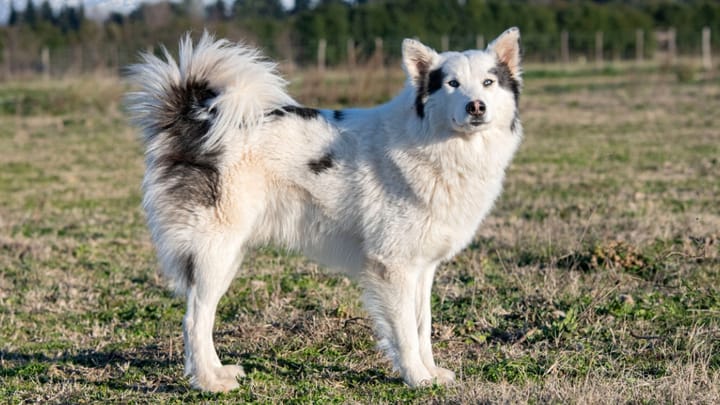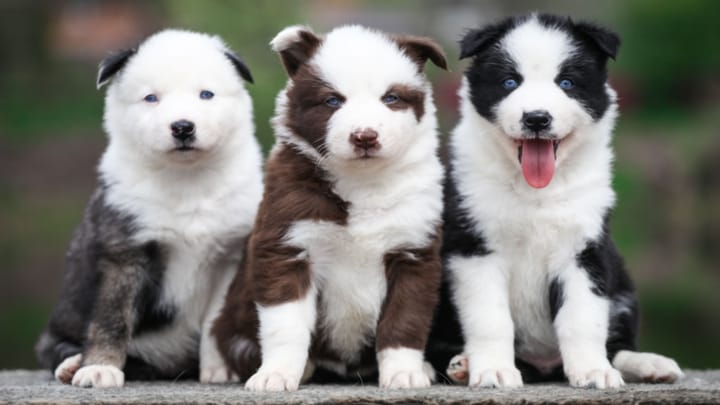Laïka de Yakoutie


The Yakutian Laika is a sled dog from Siberia, renowned for its robustness, endurance, and adaptability to extreme climatic conditions. Affectionate and energetic, it is also valued as a companion dog for its loyalty and playful temperament.
|
Life expectancy |
The Laïka de Yakoutie has a life expectancy of between 10 and 12 years |
|
Temperament |
|
|
Size |
Medium
|
|
Adult size |
Female
Between 21 and 22 in
Male
Between 22 and 23 in
|
|
Adult weight |
Female
Between 40 and 51 lb
Male
Between 44 and 55 lb
|
|
Coat colour
|
Black White Brown Sand |
|
Type of coat
|
Short |
|
Eye colour
|
Blue
Brown
Odd-eyed
|
|
Purchase price |
The Laïka de Yakoutie costs between £1300 and £2500 |
The Yakutian Laika is an intelligent, active, and friendly breed, known for its strength and endurance. Originally bred for sledging and hunting, it requires regular exercise and mental stimulation. While it thrives in colder climates due to its thick coat, it can struggle in heat. Early socialisation is essential, as it can be wary of strangers. The breed is generally good with children and other dogs, making it a loyal companion for active families or individuals.
More details about the Laïka de Yakoutie
Laïka de Yakoutie: Origins and history
The Yakutian Laika, also known as the Yakutskaya Laika, is a dog breed originating from the Sakha Republic (Yakutia) in Siberia, Russia. Its history spans thousands of years, with archaeological evidence suggesting that similar dogs were used by local people for sledding and hunting as far back as 8000 BCE. Excavations led by Vladimir Pitulko on Zhokhov Island uncovered remains of sleds and dog bones dating from this period.
The first written references to the Yakutian Laika appear in the 17th century, in accounts from Siberian explorers and traders who relied on these dogs for long sled journeys. In 1692, Dutch explorer Nicolaas Witsen described the dogs in his work Northern and Eastern Tartar, including one of the first known illustrations of the breed.
In the 19th century, the Yakutian Laika was widely used to transport goods and mail across the vast Siberian expanses. However, with the advent of industrialisation and new transportation methods such as trains and snowmobiles in the early 20th century, the breed's population began to decline. In the 1950s and 1960s, the Soviet regime even removed sled dogs from the list of domestic animals due to the decline in nomadic lifestyles.
Following the collapse of the Soviet Union in 1991, interest in the Yakutian Laika was revived. In 1993, it was officially recognised by the State Commission for the Preservation of Genetic Heritage in Russia. A group of enthusiasts undertook rigorous breeding programmes to restore the breed, culminating in the creation of an official standard in 2004. These efforts helped the Laika regain its status and popularity, both as a working dog and as a companion.
FCI classification of the Laïka de Yakoutie
-
Group 5 - Spitz and primitive types
-
Section 1 : Nordic Sledge Dogs
Laïka de Yakoutie: Characteristics
Laïka de Yakoutie: Behaviour
Training a Laïka de Yakoutie
Training a Yakutian Laika requires patience, consistency, and positive reinforcement. As an intelligent but sometimes stubborn breed, it responds best to reward-based methods.
Early socialisation is essential to build confidence, while regular mental and physical stimulation prevents boredom. Short, engaging training sessions help maintain focus, making learning enjoyable for both dog and owner.
Laïka de Yakoutie: Lifestyle
Breed compatibility Laïka de Yakoutie
Laïka de Yakoutie: Purchase price
In the UK, a Yakutian Laika puppy typically costs between £1,300 and £2,500, depending on factors such as breeder reputation, pedigree, and availability. Since the breed is rare outside Russia, prices may vary significantly, and potential owners might also need to factor in import costs if sourcing from abroad. Daily costs include food, insurance, and vet care.
Laïka de Yakoutie: Shedding
Heavy !
The Yakutian Laika sheds regularly and can be considered a heavy shedder. It experiences peak shedding periods, typically in late winter and early spring, when shedding increases significantly. During these times, daily brushing is recommended to manage the amount of loose hair.
Laïka de Yakoutie: Grooming
Outside of shedding seasons, weekly brushing helps prevent matting and maintain coat health. However, in more temperate climates, the breed may shed almost year-round, requiring more frequent grooming.
Laïka de Yakoutie: Health
The Yakutian Laika is generally a robust and healthy breed, well-suited to difficult climatic conditions, showcasing its impressive resilience.
The Yakutian Laika struggles to tolerate heat. It’s advisable to provide a cool, shaded environment during hot weather, as it is susceptible to heat stress.
This breed thrives in cold environments, thanks to its thick, dense coat, which enables it to withstand temperatures as low as -40°C.
The Laika is prone to gaining weight if it doesn’t receive enough exercise. Careful attention should be given to its diet to prevent obesity, particularly if its physical activity levels are insufficient.
While generally hardy, the Yakutian Laika, like any breed, can be susceptible to certain health issues. Common conditions include:
- Hip and elbow dysplasia
- Gastric Dilatation-Volvulus
- Eye abnormalities
- Deafness






